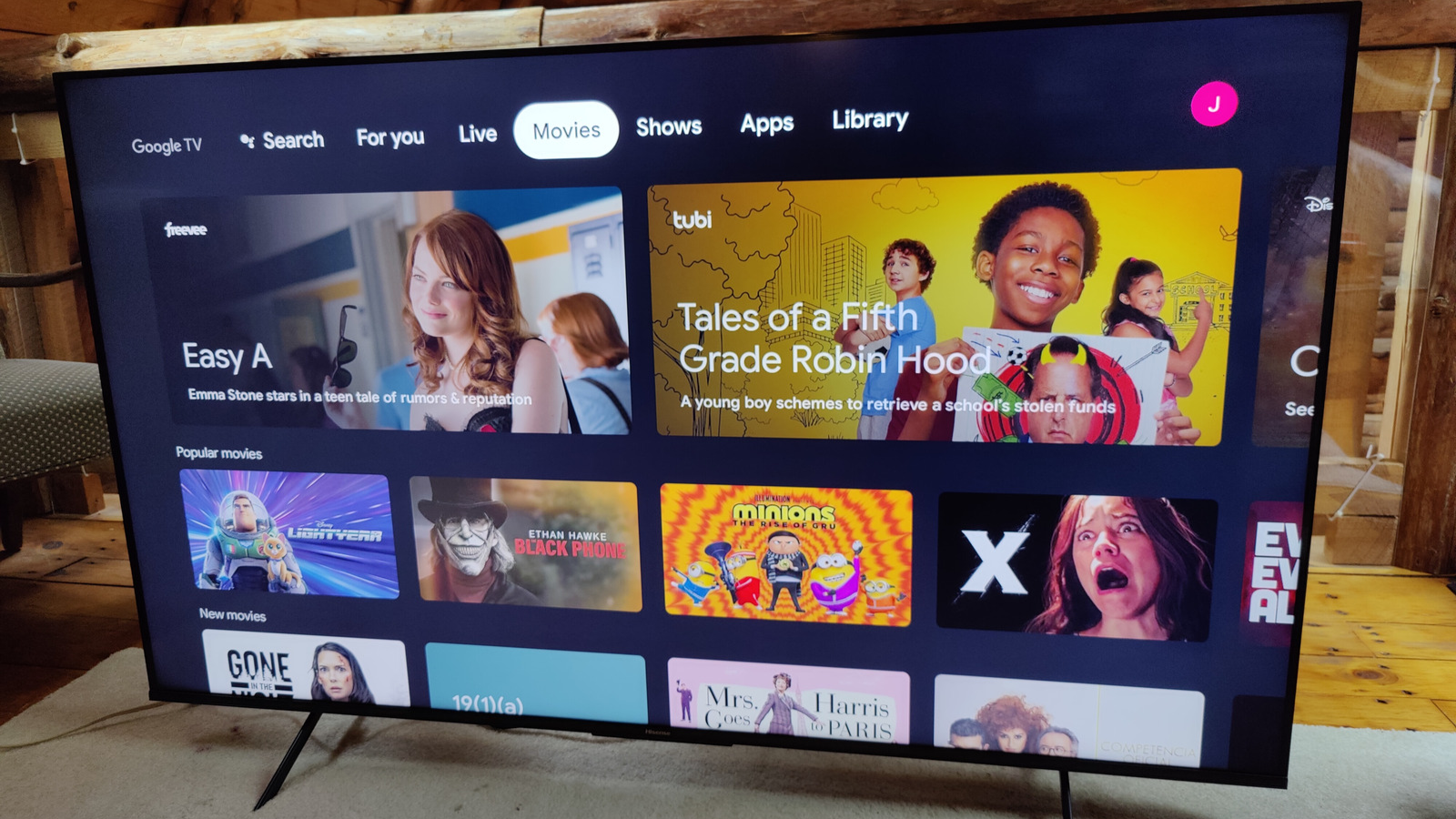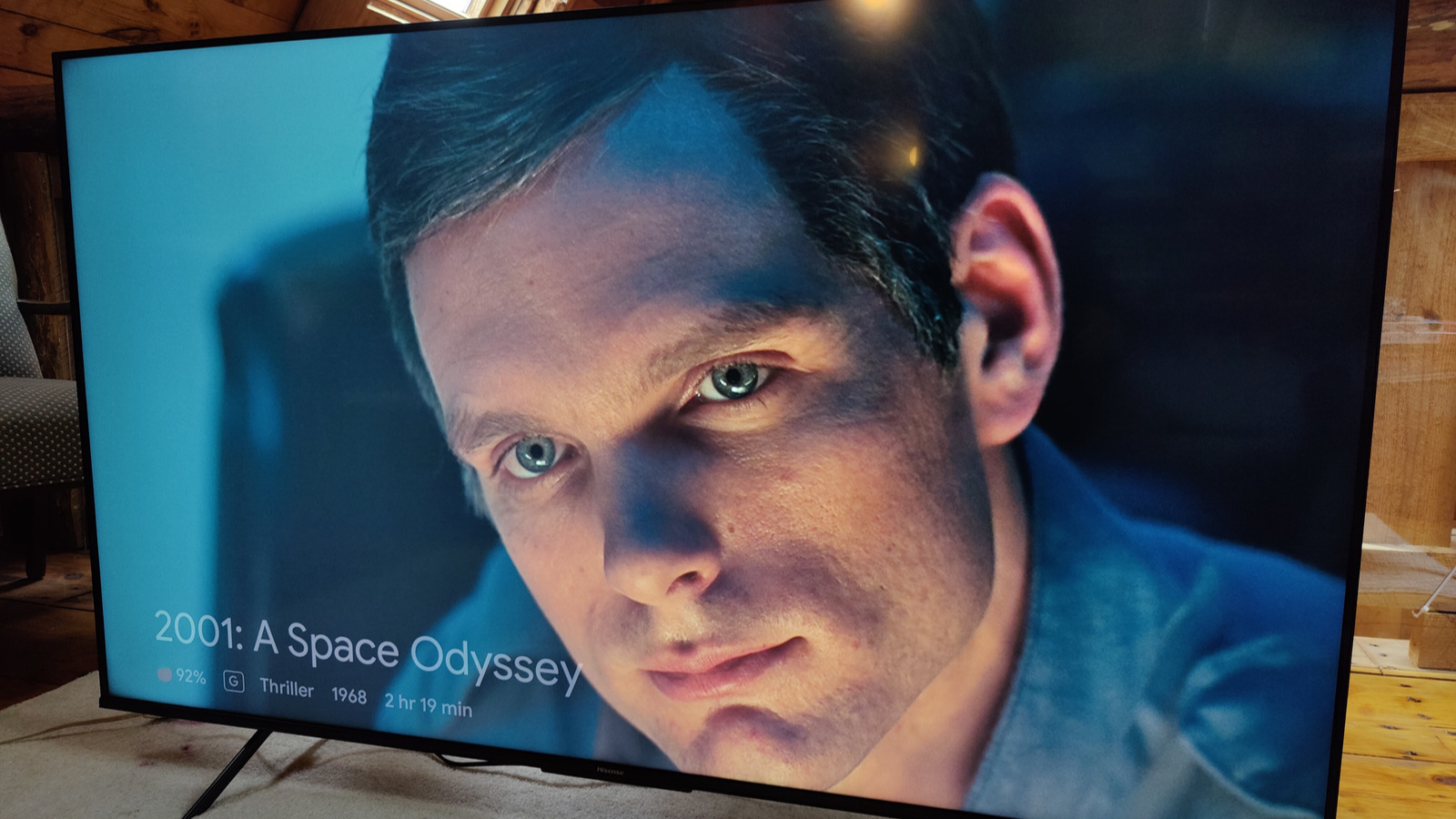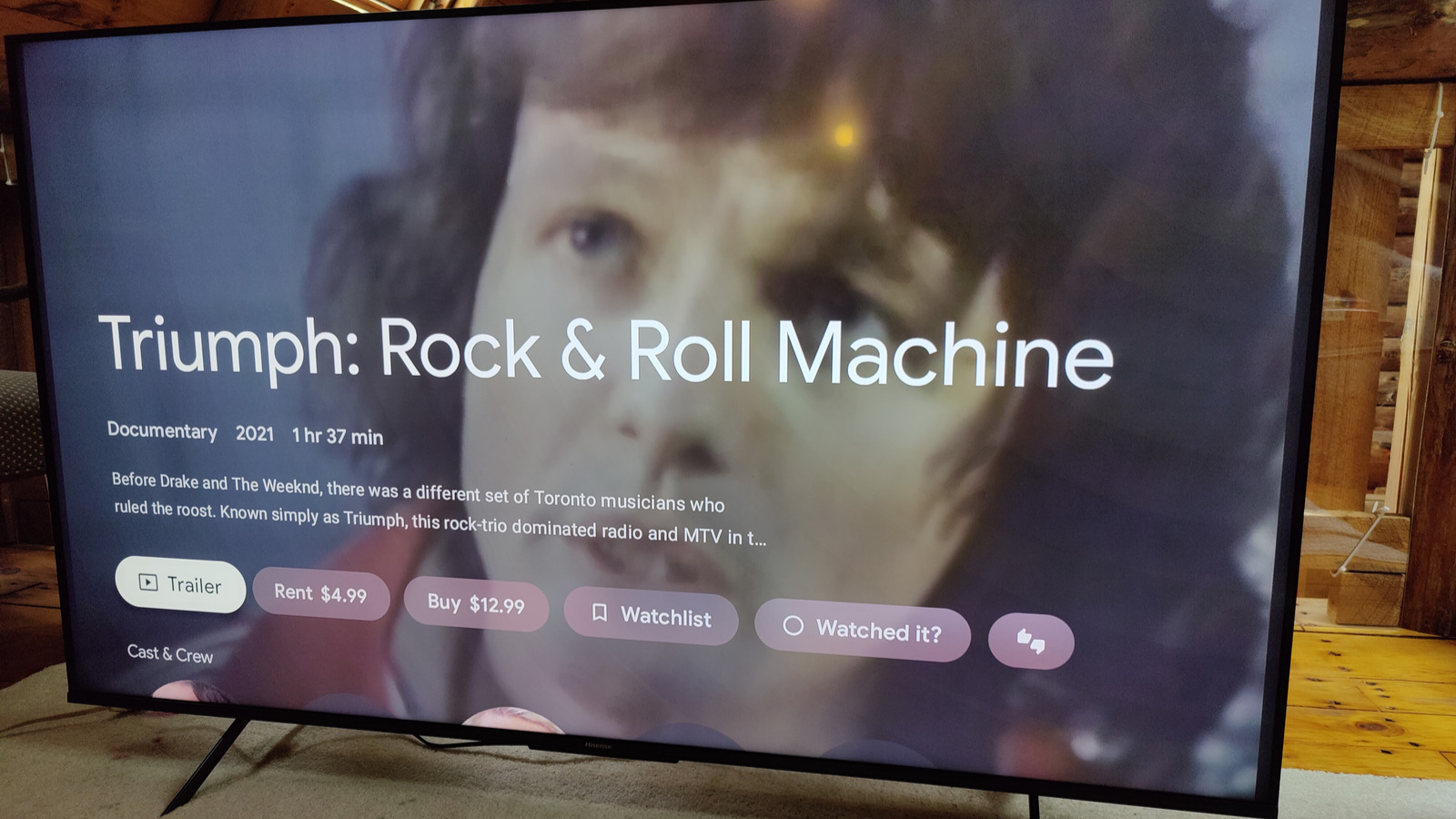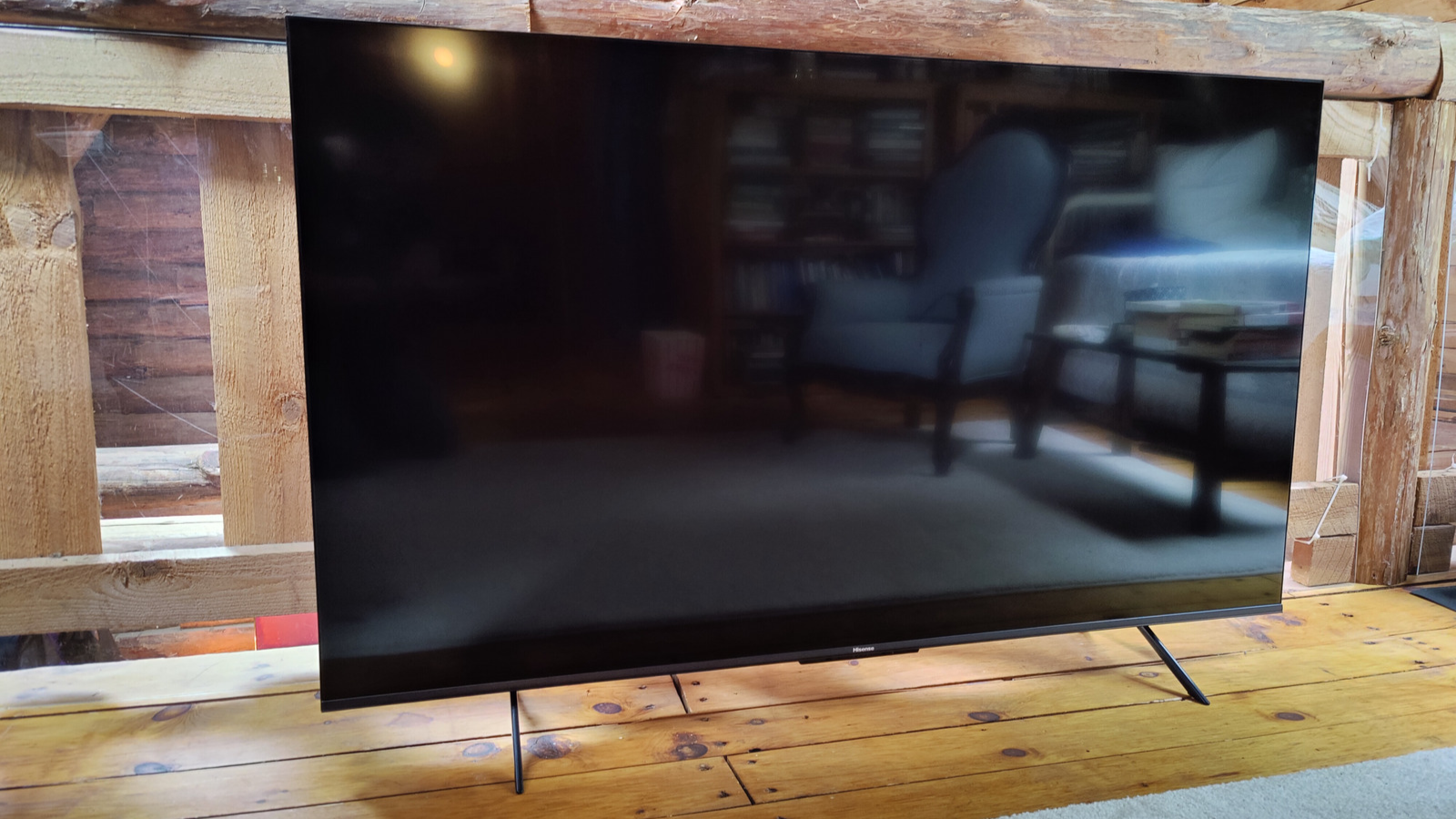Hisense U6H 65-inch ULED 4K TV review: a bargain TV with a luxurious picture
Hisense demonstrates that top tech is now making its way into budget-oriented sets


It seems like everyone is budget-conscious these days, so TV shoppers are going to appreciate the quality 4K picture and admirable color fidelity of this bargain-priced set.
-
+
Excellent 4K picture
-
+
Impressive color quality
-
+
Google TV smarts
-
-
Lackluster built-in sound
-
-
Understated contrast
Why you can trust T3

Just because something is a bargain doesn't mean that it’s making compromises. Exhibit A: the Hisense U6H 65-inch ULED 4K TV, a set that impresses but won't break your budget.
The Hisense U6H is a full-featured 4K TV with a quantum dot layer designed to bolster picture performance and deliver better support for high-dynamic range color, including HDR10+ Adaptive and Dolby Vision IQ. It also boasts a full-array LED backlight with local dimming to manage scenes with bright and dark elements. Hisense has opted for Google TV to manage its smart TV streaming features and give it convenient voice control.
While the Hisense U6H might not be quite on the mind-blowing level of some of the other best TVs on our list, it also doesn’t come with the premium price tag. Learn about how we test products, and read on to find out if the Hisense U6H is the right TV for you.
HISENSE U6H 65-INCH ULED 4K TV REVIEW: PRICE AND FEATURES
The U6H is the entry-level model for Hisense's new U series of sets, which tops out with the U8H. The U6H comes in several sizes, ranging from 50 to 75 inches. I tested the 65-inch U6H, which is available for $600 / £600. The set has the quantum dot display (aka QLED) and support for the main 4K (3,840 by 2,160 pixels) high-dynamic range formats, including HLG (hybrid log-gamma, for broadcast and streaming services).
The U6H uses a native 60 Hz panel versus high-end, faster refresh rate 120 Hz panels. Discerning eyes will note the difference, particularly in gaming situations. If you do want a faster panel, the 65-inch Hisense U7H has a 120-Hz refresh rate, but costs around $200 / £200 more.
The Google TV interface does a good job of supporting all the usual streaming video services. It includes all the major players, including Netflix, Amazon Prime, Disney+ and YouTube, as one would expect. It allows you to use the Google Assistant voice control system without a remote, thanks to the set's built-in far-field microphone.
It also picks up Alexa commands, if you prefer, and it can be turned off using a front button just under the screen if you don't want it listening all the time. Otherwise, it works like a standard Google Assistant device so it can answer queries even when the TV is turned off.
Get all the latest news, reviews, deals and buying guides on gorgeous tech, home and active products from the T3 experts
In order to make all the necessary connections, the Hisense U6H includes Wi-Fi and Bluetooth, as well as a full accounting of wired connections on the back. There are four HDMI ports, two USB connections, ethernet and a coaxial hookup for an antenna or older video source, plus AV inputs, digital audio output and a mini headphone jack. In short, there's everything you'd need here to build a home theater system.

The Hisense U6H 4K TV has outstanding color fidelity and picture detail that will please any cinephile.
HISENSE U6H 65-INCH ULED 4K TV REVIEW: PICTURE PERFORMANCE
The Hisense U6H has several preset picture modes for different use cases, featuring an Eco mode to save power, Standard, Theater Day, Theater Night and Filmmaker Mode. The last mode is designed to turn off most of the video processing and render movies with settings that bring it as close to what the director originally intended as possible.
You can also tweak picture settings on your own, including adjusting effects such as "motion clearness," picture noise reduction, dynamic range, active contrast (which is turned off in the theater modes), tint, sharpness and brightness. For all that, I found that Theater Day mode was the best for a variety of material and programming.
In Hulu's hit series, “Only Murders in the Building,” there was excellent detail in the 4K picture and colors were rendered faithfully. Orange clothing popped, while blood red was well saturated without bleeding into neighboring blue and teal elements. And skin tones looked realistic, with Martin Short appearing to be in the pink.
Overall, screen uniformity was also quite good on the Hisense U6H with colors unblemished across the screen from corner to corner. Even challenging scenes, such as the serpent's cave in “Star Wars: The Rise of Skywalker,” were handled adeptly, revealing the ribs of the cave walls in the shadows without any banding or haloing around bright lights or sacrificing contrast. Desert mesas looked remarkably detailed, as well, and there was a distinct lack of motion artifacts in fast action scenes.
Similar compliments could be expressed about how the Hisense U6H handled other movies, such as “Mad Max: Fury Road.” Even the fire-breathing guitar looked realistic and striking without excessive enhancement that can make the scene appear artificial on other sets. Black areas of the screen, like the bars denoting a letterboxed program, were solid and dark.
If there is a weakness in the picture performance of the Hisense U6H it's in how it deals with some lower resolution video material. “Blow Up” looked a little flat with a slight soap opera effect created by the upscaling process. Yet, the TV’s color fidelity was so good that I was still mesmerized by some of Michelangelo Antonioni’s directorial flourishes.
And while the U6H handled standard TV broadcasts in 720p with aplomb, it had some difficulty upscaling “Harry Potter and the Sorcerer's Stone,” where contrast suffered in dark corners and image depth was lacking, making the kids look superimposed in some scenes.
Gamers may also find reason to criticize the Hisense U6H, given its 60 Hz panel and the fact that, while it supports variable frame rates, it doesn't support AMD's FreeSync or Nvidia's G-Sync. Nevertheless, in game mode, the set's input lag wasn't noticeable. So when you get fragged, you won't be able to blame it on the U6H's performance.

The HISENSE U6H includes several preset sound modes.
HISENSE U6H 65-INCH ULED 4K TV REVIEW: SOUND QUALITY
In the sound department, the U6H's built-in audio is typical for sets in this price range, which is to say it's generally lackluster. There are several preset sound modes, but I settled on switching between just two – Music mode and Theater mode.
Music brings in a more focused bass range while Theater produces an exaggerated, synthesized virtual surround sound, widening the soundstage with excessive mid- and high-range frequencies. (The Standard audio mode is hollow, as if the sound were emanating from under the TV and only one speaker was working.) You can adjust the balance, as well as control a basic equalizer and make lip sync adjustments.
Auditioning several Metric songs revealed that the nuances of Emily Haines' voice were reproduced well enough. But the ultimate vocal test, Aha's “Take On Me,” sounded tiny even though Morten Harket's vocals were clear on the high notes. Not surprisingly, though, the lower bass registers were lacking in depth, with Steely Dan's “Bodhisattva” sounding as if part of the kick drum was missing.
Movie soundtracks fared better on the Hisense U6H. Dolby Atmos programs did particularly well, with sound effects nicely balanced against clear, audible dialogue. And the sound was sufficiently loud to handle movies like “Mad Max: Fury Road.” However, other material, such as music videos from an external source, did not produce much volume, and I was able to drive the set to its top volume without eliciting complaints from the neighbors.
Bottom line: To match the audio quality with the picture quality of the Hisense U6H, I recommend you add an external sound bar.

The remote is simple and includes dedicated buttons to launch various popular apps.
HISENSE U6H 65-INCH ULED 4K TV REVIEW: DESIGN AND USABILITY
Setting up the Hisense U6H is a straightforward affair. For a tabletop, the set has two V-shaped feet that cannot be installed incorrectly thanks to unique insertion arms. If you want to mount it on a wall, the U6H works with VESA standard brackets.
To get the smart TV features up and running, Android users can launch the Google Home app, scan the on-screen QR code and perform the rest of the setup on their phones. It will connect the set to your Wi-Fi network, show you how to display a slideshow of your photos on the TV and train it to recognize your voice.
For iPhone owners, the configuration can also be done manually on the TV by following easy prompts. Moreover, the U6H works with Apple AirPlay and HomeKit, so you can use those apps with the TV.
The Hisense U6H uses the Google TV software and interface for all its smart TV functions. It presents a flexible and full set of options, comparable to what, say, the Roku TV interface offers. However, by comparison it remains a clunky, computer programmer's product. It takes multiple button pushes – and pausing the streaming video – to change the picture settings, for example, and many labels like Channels & Inputs are confusing.
Google TV's strengths are its support for a wide variety of streaming services and its voice recognition Assistant feature.
The interface has options logically laid out in horizontal rows of icons including input sources, Your Apps and popular movies and shows, along with some banner ads too, which is not a welcome feature for most viewers. By way of compensation for the ads, Google's voice assistant is quite good at understanding your commands and queries.
You can ask for local weather forecasts, as you would with other Google devices, as well as search for movies starring Robert DeNiro, for instance, or "free movies by Stanley Kubrick.”
You can make such requests without using the remote control or pressing a button. But if you must, the included Hisense remote is simple and includes dedicated buttons to launch Netflix, Amazon Prime Video, YouTube, Disney+, Tubi and Peacock.

The Hisense 65-inch U6H 4K TV is a big, beautiful television.
HISENSE U6H 65-INCH ULED 4K TV REVIEW: VERDICT
Movie lovers who can't afford a top-of-the-line set will appreciate the Hisense 65-inch U6H 4K TV. It has outstanding color fidelity and picture detail that will please any cinephile. These are qualities that you won't find in many TVs under $1,000 /£1000, let alone one around $600 / £600.
True, the U6H's Achilles’ heel is its built-in audio support, but that's also a common weakness in sets costing much more. I spent many hours watching movies on the Hisense U6H screen, and overall was very pleased with its picture.
HISENSE U6H 65-INCH ULED 4K TV REVIEW: ALSO CONSIDER
To say there is competition in the sub-1,000 4K TV category is an understatement. And while the Hisense U6H is head and shoulders above the rest with its excellent color quality, there are a couple of other major-value brand names to consider.
The 55-inch Hisense H8G punches well above its weight class for a TV that costs around $500 / £500. For a few hundred more, the 55-inch Sony XH90 finely balances powerful HDR image quality with budget.

John R. Quain has covered science and technology for more than two decades. In addition to being a contributor at T3, he is a contributing editor at Tom's Guide, a regular contributor to The New York Times and the weekly tech guru for WTVN. His articles have appeared in Car & Driver, Esquire, Fast Company, Rolling Stone, and U.S. News & World Report, as well as numerous technology publications. Quain was the recipient of a Paris Accords of Science Communication fellowship in 2019. He regularly speaks about issues relating to autonomous vehicles and is the Editor-in-Chief of OntheRoadtoAutonomy.com. You can follow him on Twitter @jqontech